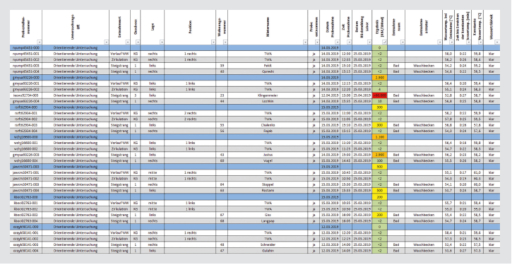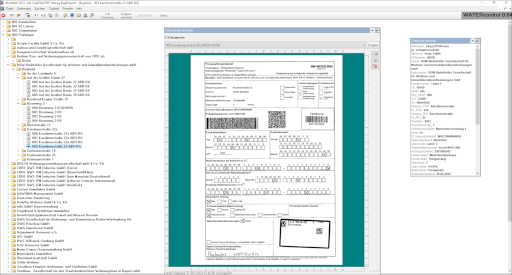 The inspection of the facility, the collection of water samples, and the examination results are documented in detail and comprehensibly, and reported to the client. In this reporting process, the most important aspect for the facility operator is whether Legionella bacteria are present in significant concentrations in their hot water installations. Therefore, we do not simply send the findings to the customer without comment, but summarize them in a clear and concise findings report with detailed explanations. The filterable table and the color-coded marking of contamination classes are useful aids for our customers, especially when managing very large inventories of facilities.
The inspection of the facility, the collection of water samples, and the examination results are documented in detail and comprehensibly, and reported to the client. In this reporting process, the most important aspect for the facility operator is whether Legionella bacteria are present in significant concentrations in their hot water installations. Therefore, we do not simply send the findings to the customer without comment, but summarize them in a clear and concise findings report with detailed explanations. The filterable table and the color-coded marking of contamination classes are useful aids for our customers, especially when managing very large inventories of facilities.
In this process, facilities and samples are listed line by line in a clear and organized table. The classification of the detected Legionella concentration is based on the relevant DVGW guideline W 551, which categorizes it into “none to low” (0 – 99 CFU), “moderate” (100-999 CFU), “high” (1000-9999 CFU), and “extremely high” (10,000 CFU or more) levels of Legionella in 100 ml of drinking water. This classification is presented in an easily recognizable traffic light system.
This way, the client immediately knows whether they have a localized issue somewhere or if a multitude of facilities are affected by Legionella. Further explanations regarding the findings are provided by our colleagues from the hygiene and/or technical departments. An advantage for the client is that we have both competencies in-house. The environmental parameters such as the sampling temperature, constant temperature (Tmax), or the time to reach temperature stability, which we routinely document during the sampling process, are often helpful. These parameters are included in the findings report.
The findings report will be provided via email as an Excel spreadsheet and PDF file. However, it can also be imported into any common database solution via CSV import. Since we have our own IT specialist in our team, we are very flexible and customer-friendly at this point.
We also take care of transmitting the findings to the respective local health authority on behalf of the client. If the health authority requires further measures or orders follow-up investigations, we always keep an eye on it for the client.
 If the entire process from sample collection to identifying any abnormal findings needs to be traced, it is not a problem for us at all. The procedure can be described as follows:
If the entire process from sample collection to identifying any abnormal findings needs to be traced, it is not a problem for us at all. The procedure can be described as follows:
For each mandatory inspection of a drinking water heating system (TWA), a sampling protocol is generated by our documentation software. The basis for this is the existing inventory information provided by our clients. If it is not conclusively determined in advance where large-scale systems, as defined in the DVGW guideline W 551, are located within the inventory, a data reconciliation is conducted between WATERcontrol and the client. The verified inventory data is incorporated into our sampling protocols. The basic principle is that each house or drinking water heating system (TWA) receives a master protocol. This protocol is printed on paper and equipped with multiple barcodes. We have opted for paper-based documentation and rejected a purely electronic mobile data collection solution. Nothing generates such a high level of legal certainty as a manual signature on a document.
For water sampling from residential units, the tenant signs the document, while for water sampling from drinking water heating systems, the water inspector signs it. The sample containers are clearly labeled so that they can be easily associated with the master protocol at any time. The protocols also take into account the coding requirements provided by the health authorities. These pieces of information are transferred to the databases of the testing laboratories through computer interfaces. The findings reporting is then sent simultaneously through the usual communication channels to the respective health authorities and to us.

